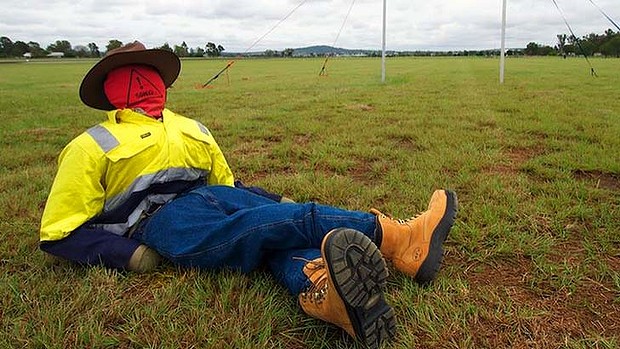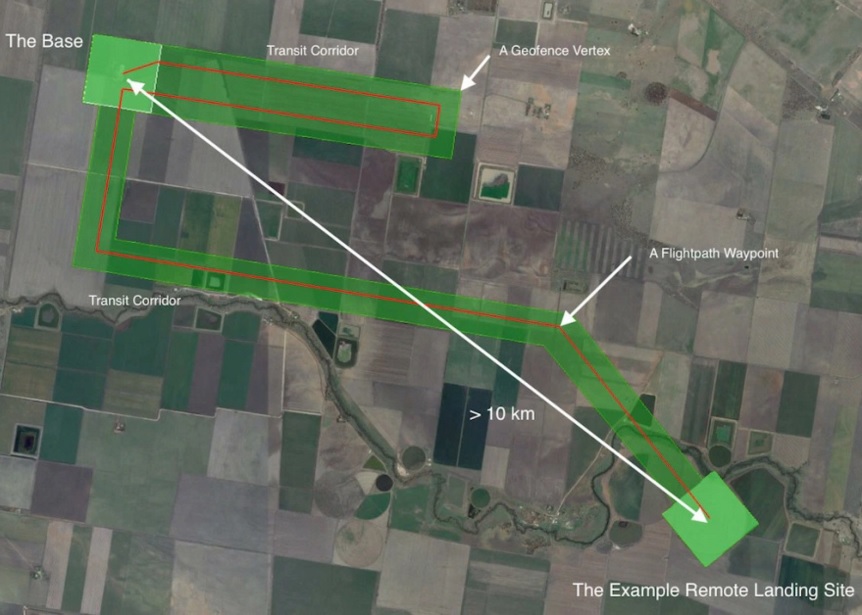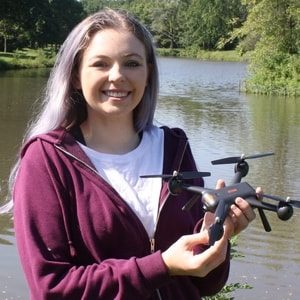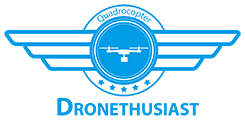Catching Drone Fever Down Under: History of The UAV Outback Rescue
Early Origins Of Drone Competitions
Unmanned aerial vehicle competitions are not a new phenomenon. The well-known International Aerial Robotics Competition was held the first time back in 1991 at the Georgia Institute of Technology, in the very tech-savvy hub of Atlanta. With a focus on a response to a major disaster or military operation, this was a very practical event, because it related to events that could take place in the world. Not a quick in-and-out type of event, some of the scenarios took years for the participants to conjure up. The International Micro Air Vehicles (IMAV) Competition has been in existence since 1997, in the city of Beijing, China.
Beginning days of the well-known Outback Rescue
Another very important and industry recognized UAV competition is the UAV Challenge, in Australia.
11 years ago, a joint industry and academic workshop in November looked in-depth at the many different pros and cons of using drones in a more civilian, less military manner. Those who participated determined that there was a huge amount of potential to have a burgeoning, positive industry, but there were many elements that needed to be given attention. At that point, many pictured drones as very military devices, and they did not have knowledge of where they could legally fly them, and the technical knowledge of how to pilot them. To address these issues and collectively create an event that would wow visitors and spectators, the UAV Challenge’s deep roots were then planted.
The unwitting star of the show was Outback Joe, who was an unlucky individual lost in the wilderness, and entrants had to use their skills to drop him a water bottle. In just an hour, participating teams had to locate Joe successfully, and they were also allowed 15 minutes to setup and tear down their control stations on the ground.

This was not just some simple event to sign up and then participate in; the process was very lengthy, and teams had to pass an elaborate series of milestones to be considered. The first order of business was to produce a six-page technical report detailing the safety issues of controlling a drone from the remote location of the airport. After doing this, they then had to produce a longer report on the same topic, and show a video of the aircraft they were using.
Early Moments of History for the Original UAV Challenge
From 2007 until 2010, this remained to be the standard protocol for entrance, and participants were also questioned about their safety strategy. Judges closely looked over the aircraft, and then monitored the entrants flying abilities. During 2007, 43 teams from 6 different nations entered the competition, but no teams were able to pass the initial phase of qualification that heavily scrutinized construction and piloting ability.
For the next two years, there were STILL no teams that had what it took to launch from the airfield and attempt to locate the missing Outback Joe. But during 2010, this trend of non-qualification finally came to an end.
That year, two teams finally passed the technical and piloting aptitude scrutiny, and a team from the University of North Dakota came so very close to winning. You can check out their team video here.
The only thing they did wrong was drop the rescue water bottle about 450 m from the location it needed to be. Otherwise they had a great flight and located Outback Joe effectively.
After this event, the judging committee made those who wanted to enter have 5 hours of proven flight time, and extended the competition time of the event. From now on, it would be bi-annual, and during 2014, 116 teams entered the contest. A team from Canberra, called “CanberaUAV” finally won during this year! They were awarded $50,000 for their efforts, and during this event, the airport even stayed open for its usual traffic.
We spoke with Jonathan Roberts, a Professor in Robotics at the Science and Engineering Faculty at the Queensland University of Technology, and one of the original founders of the challenge. When asked about how many participants he expects this year, he said he does expect around 20 teams to qualify, but some drop away when it gets close to the event. You can find out more about him and his distinguished career here .
Pilot Heroes Among High School: A new Event for 2016
This year, high-school age students from all over the world will have their chance to show their skills at Calvert Radio Aero Modellers Society Flying Field in Queensland. This time, Outback Joe has made an urgent call for distress, and he needs an aerial drop of medical supplies. The aircraft must now be piloted so it also passes successfully over two hurdles on the course. Those interested in entering will need to submit a technical report detailing their design, and the way in which they will adhere to safety procedures.
The accuracy of the drop itself, documentation of technical procedures, and the team’s oral presentation on their handling of the event are all what determines points scored. The purse is the reason why many enter, and how can you blame them? This cash money could go quite a long way for helping out with college, other bills, or buying more unmanned aerial equipment for other events! For all the details about this event, you can check out the website for all the fine details.
Co-founder of the event Jonathan Roberts again gave us his valuable insight on the event, and told us: “The catch is that the pilot of the UAV is not allowed to trigger the drop. So the teams have to use some sort of technology to trigger the drop. Some use FPV goggles, others develop automatic droppers based on GPS and some have in the past tried to detect a set of hurdles that we place close to the farmer, Outback Joe.” Here is the breakdown of the money available for those with the best and baddest flight skills:
• First Place AUD $5,000
• Second Place AUD $2,000
• Third Place AUD $1,000
• First placed Rookie Team: AUD $2,000
Variation on the Theme: The Medical Express Mission
This September in Outback Australia, there will be an event with a slightly different spin on the original Outback Rescue mission. This time, the challenge is a bit higher, as you have to pick up a blood sample from the now-under-the-weather Outback Joe, and get the sample promptly back to the lab.
Here’s a look at the map of the Medical Express challenge coming up.

This event properly depicts one of the most innovative uses for drones and UAVs: to navigate over floodwaters, and help someone who needs medical attention. During the very near future and also the present, drones will be used like this in real-life scenarios, and an entire career opportunity category of pilots is already being created worldwide.
Points will be awarded based on the performance of the mission, accuracy of landing, and technical documentation. Many of the high school students in the current global climate are realizing that engineering and technical skills are what are most in demand, and are chasing their passions with a fervor that is unprecedented.
During the near future, natural disasters, potential pockets of civil unrest, and a globe that is connected via the web are all elements that will fuel the need for pilots everywhere. Providing supplies, surveying damage, and just plain having fun are going to all be great reasons to become a better UAV Pilot.
The Universal Appeal of Science and Flight
From the very beginning of the century when the Wright Brothers blew the minds of many and Lindberg flew his amazing journey, we have been fascinated by flight. Now as drones and UAV’s really open up the door to new frontiers, the future seems like it is already here.
These racing events down under are the organized version of what some see as freedom: stepping outside and piloting a fully-functioning device from the ground, and competing against others to be the best.
Just like atheletes who have to train for hurdles and long distances, the mental strain may be great during the qualifying procedures, but so are the rewards. Many more besides Outback Joe will be rescued or brought supplies over the coming years, and the winners of these contests may well be the brains behind the delivery!




